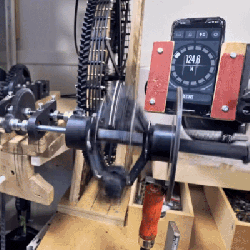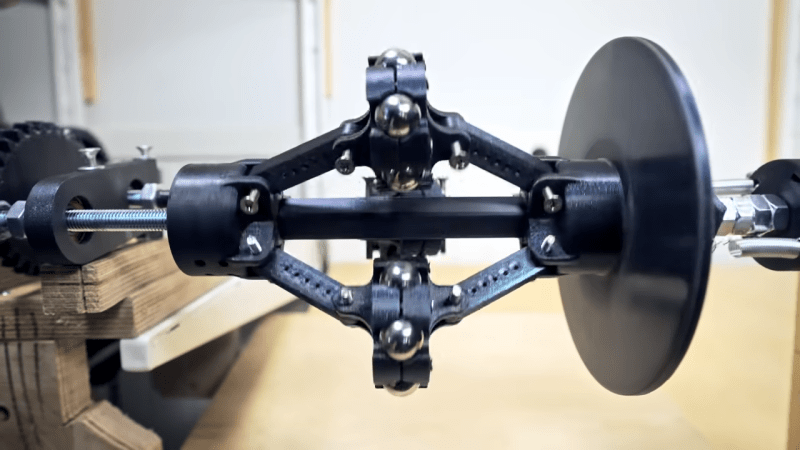[Martin] of [Wintergatan] is on a quest to create the ultimate human-powered, modern marble music machine. His fearless mechanical exploration and engineering work, combined with considerable musical talent, has been an ongoing delight as he continually refines his designs. We’d like to highlight this older video in which he demonstrates how to dynamically regulate the speed of a human-cranked music machine by taking inspiration from gramophones: he uses a flyball governor (or centrifugal governor).

These devices are a type of mechanical feedback system that was invented back in the 17th century but really took off once applied to steam engines. Here’s how they work: weights are connected to a shaft with a hinged assembly. The faster the shaft spins, the more the weights move outward due to centrifugal force. This movement is used to trigger some regulatory action, creating a feedback loop. In a steam engine, the regulator adjusts a valve which keeps the engine within a certain speed range. In a gramophone it works a wee bit differently, and this is the system [Wintergatan] uses.
To help keep the speed of his music machine within a certain narrow range, instead of turning a valve the flyball governor moves a large disk brake. The faster the shaft spins, the harder the brake is applied. Watch it in action in the video (embedded below) which shows [Wintergatan]’s prototype, demonstrating how effective it is.
[Wintergatan]’s marble machine started out great and has only gotten better over the years, with [Martin] tirelessly documenting his improvements on everything. After all, when every note is the product of multiple physical processes that must synchronize flawlessly, it makes sense to spend time doing things like designing the best method of dropping balls.
One final note: if you are the type of person to find yourself interested and engaged by these sorts of systems and their relation to obtaining better results and tighter tolerances, we have a great book recommendation for you.
















Someday he’ll realize he’s building a clock…
He is really stubborn. People have been telling him how to solve issues that are well known principles in engineering, but he insists on reinventing the wheel again. It’s frustrating to see him come up with a ‘new’ solution which half of the time is a poor substitute for basic engineering. I unsubscribed long ago. I feel bad for the people helping him out in the past.
Also, this is more than a year out of date, there is a much more recent update regarding the drivetrain.
While I have appreciated Martin’s videos for a long time, I do wish he’d complete it one of these days, despite enjoying the deep dive into engineering he does …
What? And cut off the revenue stream?
Sadly probably accurate – but hey, he gets to spend all day playing with marbles as his job so who’s the dummy?
He gave up on the Marble Machine X two years ago, and he will give up on the “Marble Machine 3” too.
Yep. When he quit working on the 2nd one, i quit bothering watching the videos. I get it’s a big task to get it reliable, but i want to see something work by now.
I completely agree. He went from hacking something together with plywood and a bandsaw and getting it to work long enough to make a very cool video to what I feel is a weird deep dive into engineering by a non-engineer. I wasn’t really interested in watching someone try to learn engineering brute force from scratch. Apparently I’m in the minority because lots of people still watch.
That was my exit as well.
He was so close to having a working machine.
Hey, don’t be mean.
For a while it looked awesome, people gathering around him to finish that project. Project Manger, CAD guy, manufacturing talent. Then he pulls the ripcord. Guy can’t finish.
Maybe it’s a marble thing. We’re loosing Ivan Miranda next… “Marble Clock for Life!!!”
He will never complete the device. The money he makes from views would dry up if he finished the machine. Cue the Elio.